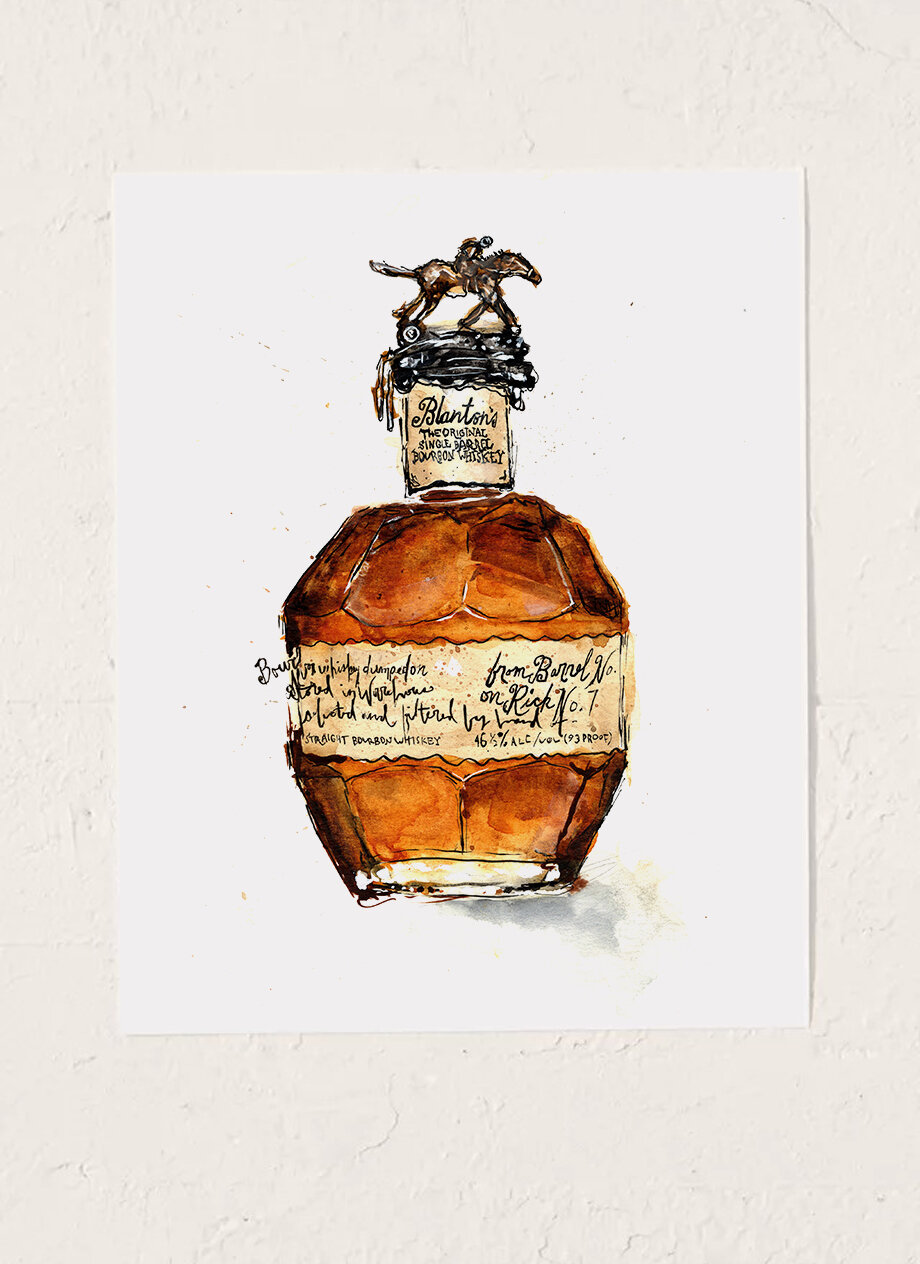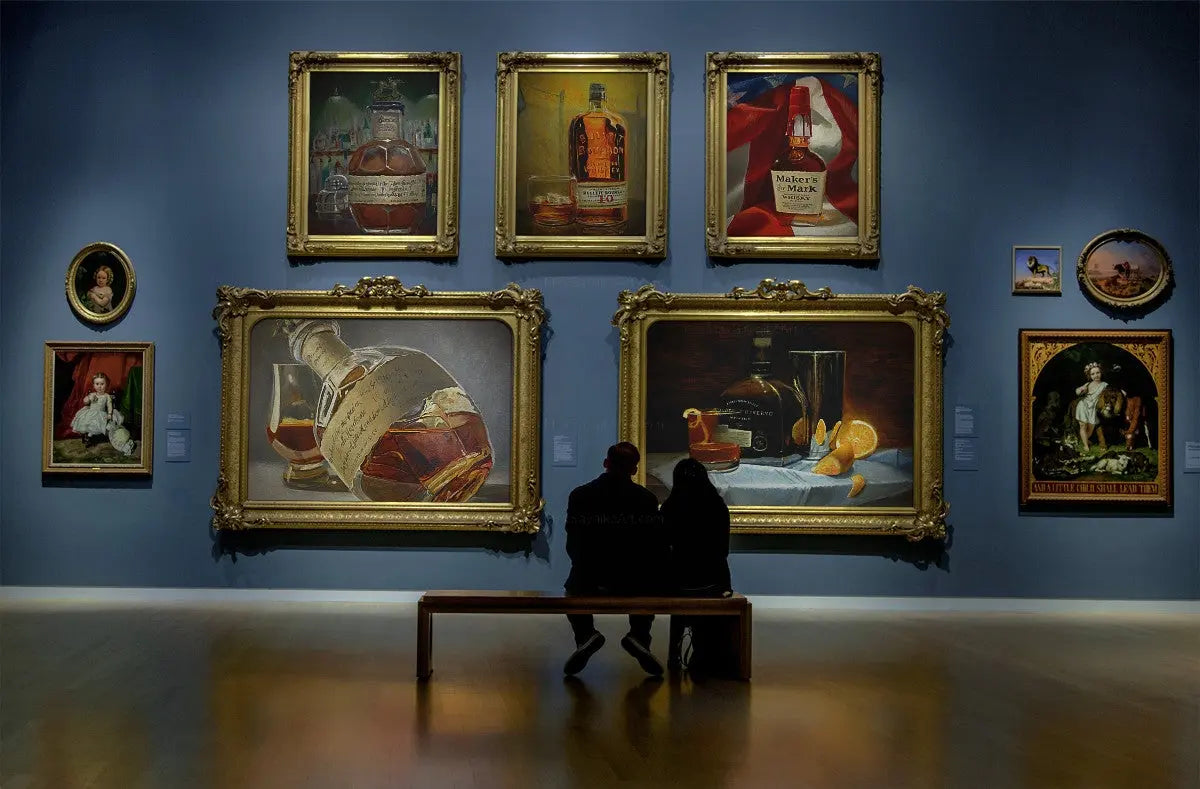Discover the World of Bourbon Art: A Journey With Culture and Workmanship
Discover the World of Bourbon Art: A Journey With Culture and Workmanship
Blog Article
The Significance of Whiskey Art in Celebrating Heritage and Workmanship in the Beverage Sector
The detailed partnership in between scotch art and the event of heritage and craftsmanship within the beverage industry can not be overemphasized. Via attentively made tags and containers, whiskey brand names envelop their historic roots and the artisanal skills that define their manufacturing approaches. This creative dimension not only boosts market allure however likewise functions as an avenue for social storytelling, fostering a much deeper link in between the craft and the customer. As we discover the numerous elements of this subject, interesting questions regarding the impact of modern patterns on traditional techniques emerge, prompting more evaluation.
The Historic Origins of Whiskey
At the heart of whiskey's allure lies an abundant tapestry of historical origins that trace back to old civilizations. The beginnings of whiskey can be connected to the purification methods of the Sumerians and Babylonians around 2000 BCE, where very early types of fermented grain drinks began to arise. Nevertheless, it was in the Middle Ages that the art of purification developed significantly, especially in Ireland and Scotland, leading to the development of bourbon as we understand it today.
The term "whiskey" itself originates from the Gaelic word "uisce beatha," meaning "water of life." This phrase highlights the social significance of scotch in Celtic cultures, where it was often connected with routines, parties, and public bonding. By the 15th century, distillation became an acknowledged craft within reclusive areas, leading the way for the establishment of legal distilleries.
As trade paths broadened, bourbon's appeal expanded, going beyond local borders and capturing the interest of lovers worldwide. Limited Edition. This historic trip shows not just the workmanship behind bourbon manufacturing yet also its essential function in social and cultural contexts, marking it as a considerable drink throughout history
Artistic Expression in Branding
Bourbon branding stands as an engaging intersection of artistry and commerce, where aesthetic identification plays an essential role fit consumer assumption. The aesthetics of bourbon labels, product packaging, and advertising and marketing materials reflect not only the brand's story however likewise its core worths and heritage. With imaginative expression, distilleries share a story that resonates with customers, stimulating feelings and sparking links.
Making use of shade, typography, and imagery in branding offers to separate products in a saturated market. Conventional concepts may stimulate a sense of credibility and workmanship, while modern-day styles can represent technology and forward-thinking. This tactical creative instructions enhances brand name recognition and commitment, permitting consumers to build a personal connection with the bourbon they select.
In addition, artistic expression in branding usually functions as a celebration of local heritage. Distilleries frequently include neighborhood symbols or historic referrals into their styles, developing a local color that invites customers to take part in a broader cultural experience. Ultimately, the virtuosity behind bourbon branding not just enhances visual appeal but likewise improves the total narrative of the brand, promoting a much deeper gratitude for the craftsmanship and heritage embedded in each bottle.
Craftsmanship in Container Layout
The virtuosity evident in whiskey branding prolongs beyond visual identification to include the workmanship entailed in Get More Info container layout. Each container functions as a vessel not just for the spirit within, yet also for the story it outlines its practice, origin, and high quality. The design procedure calls for meticulous focus to information, as aspects such as form, closure, and material add dramatically to the overall assumption of the whiskey.
Workmanship in container style includes selecting premium glass that can enhance the scotch's shade and clearness, while likewise providing a responsive experience for the customer. The silhouette of the bottle have to be both cosmetically attractive and functional, typically reflecting the heritage of the brand name. Lots of distilleries select distinct forms or embossed logos that evoke a sense of authenticity and background.
Furthermore, the tag design and typography play a crucial duty in interacting the brand name's narrative. Bourbon Art. A well-crafted container not only captivates the consumer's eye but likewise reinforces the brand's dedication to quality and practice. This way, the workmanship of bottle layout ends up being an essential aspect of the bourbon experience, merging virtuosity with a profound regard for heritage
Social Relevance of Bourbon Art
Celebrating practice and workmanship, the social significance of scotch art goes beyond mere aesthetic appeals, intertwining with the historic and social narratives of the regions from which it originates. Each container works as a canvas, portraying the one-of-a-kind stories, mythology, and traditions that have formed local whiskey-making methods. The intricate designs usually reflect the heritage of the distillers, integrating icons and concepts that resonate with the culture and values of their areas.

In addition, bourbon art plays an important role in public celebrations and events, functioning as a concrete web link in between people and their shared experiences. By appreciating the virtuosity in whiskey packaging, consumers cultivate a much deeper understanding and regard for the craft, eventually improving their satisfaction of the drink itself.
Modern Trends in Whiskey Discussion
Over the last few years, the discussion of whiskey has actually developed to show modern preferences and trends while still honoring typical craftsmanship - Limited Edition. Distilleries are progressively concentrating on aesthetic components that enhance the total drinking experience, linking the void in between heritage and modernity
Innovative container layouts have actually arised, commonly including sustainable materials and artistic labels that inform compelling tales. Many brands now collaborate with regional artists, infusing their items with unique visual expressions that reverberate with customers. Additionally, limited-edition releases are often packaged in collectible containers, adding value and appeal for connoisseurs.

Final Thought
In conclusion, whiskey art serves as an essential channel have a peek here for sharing the heritage and workmanship inherent in the drink market. Through elaborate branding, cutting-edge bottle designs, and culturally significant creative aspects, bourbon brands properly honor their practices and attach with consumers.


Craftsmanship in bottle design involves choosing top notch glass that can improve the bourbon's shade and clarity, while also offering a responsive experience for the consumer. In this method, the workmanship of bottle design comes to be a crucial aspect of the bourbon experience, combining virtuosity with a profound regard for heritage.
In conclusion, scotch art serves as an important conduit for sharing the heritage and workmanship intrinsic in the beverage sector.
Report this page